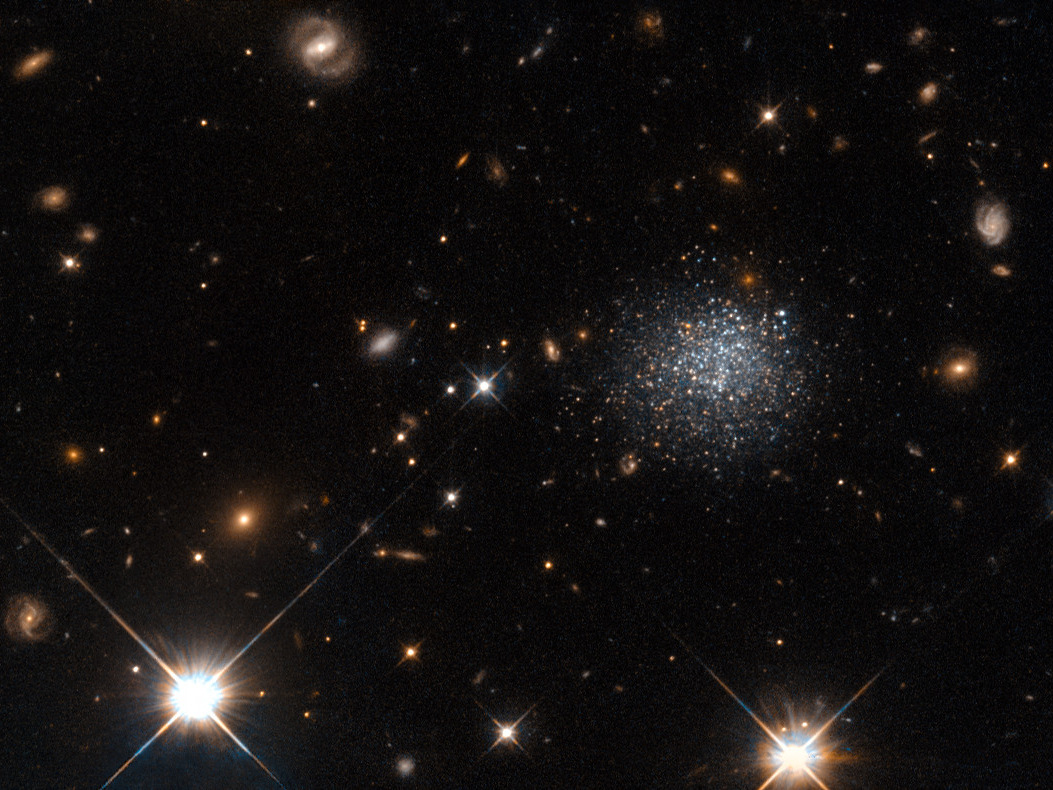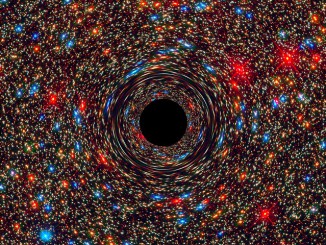
This particular dwarf galaxy contains a plentiful reservoir of gas from which it could form stars. However, it stubbornly refuses to do so. In a bid to find out why, Hubble imaged the galaxy’s individual stars at different wavelengths, a method that allows astronomers to figure out a star’s age. These observations showed that the galaxy has been around for at least six billion years — plenty of time to form stars. So why has it not done so?
Rather than being stubborn, LEDA 677373 seems to have been the unfortunate victim of a cosmic crime. A nearby giant spiral galaxy, Messier 83, seems to be stealing gas from the dwarf galaxy, stopping new stars from being born.



